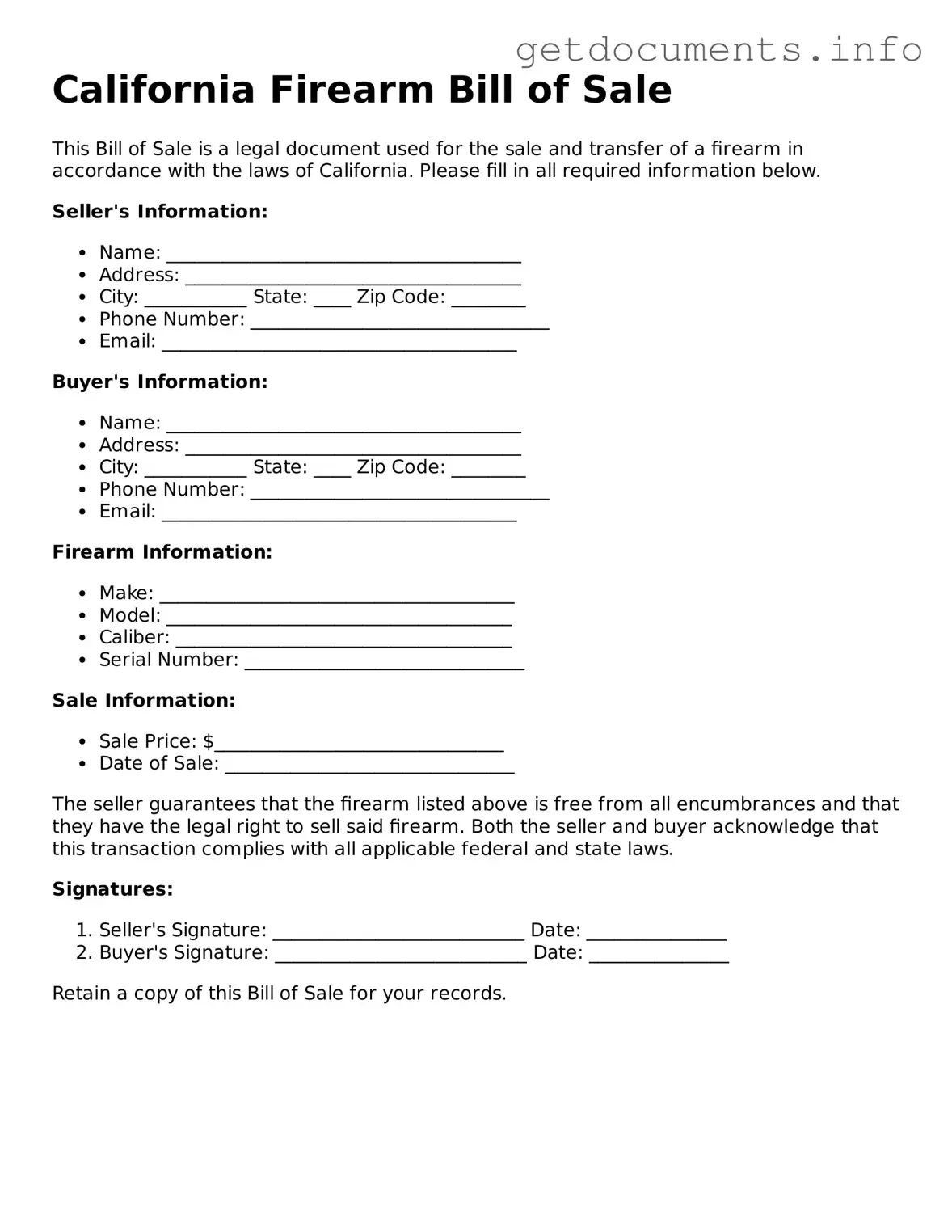In California, the process of transferring firearm ownership is governed by specific regulations to ensure safety and compliance with state laws. One crucial document in this process is the Firearm Bill of Sale form. This form serves as a written record of the sale or transfer of a firearm between parties, capturing essential details such as the names and addresses of both the buyer and seller, the date of the transaction, and a thorough description of the firearm itself, including its make, model, and serial number. By using this form, individuals can establish proof of ownership and protect themselves from potential legal issues that may arise in the future. Additionally, the form often requires the seller to confirm that the buyer is legally eligible to own a firearm, which is a vital step in promoting responsible gun ownership. As firearm laws can vary significantly from state to state, understanding the nuances of the California Firearm Bill of Sale form is essential for anyone involved in the buying or selling of firearms in the state.
